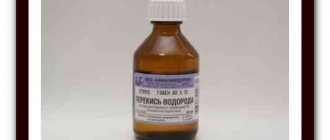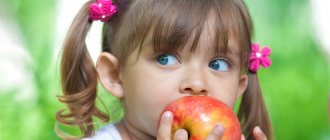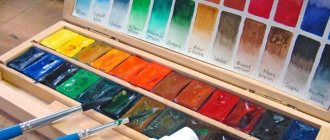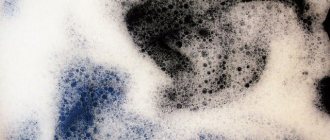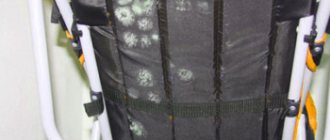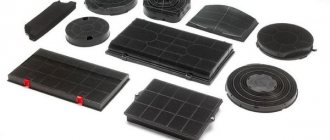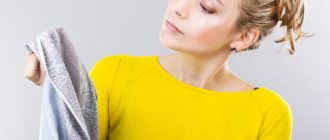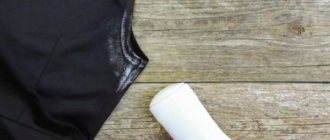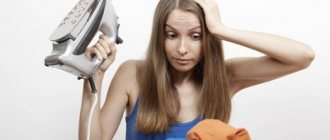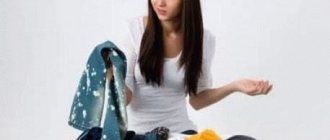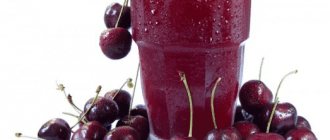01.11.201615.02.2017 Maria Ivanova 0 comments
Taking care of the things of a son or daughter is among the top priorities of every loving mother. Removing all kinds of contaminants is work that periodically has to be done with certain elements of a child’s wardrobe.
To remove stains from a particular food or dye, you have to be very careful when choosing cleaning products. The wrong choice can lead to final damage to the item and the need to purchase a new one.
It is equally important to choose a cleaning option that will not negatively affect the baby’s delicate and vulnerable skin.
How to remove old stains from children's clothes at home
Washing children's clothes takes a huge amount of time: kids constantly get their clothes dirty. As a rule, such stains are difficult to classify as simple. Often the cause of contamination is fruit juices, fat, plasticine, and colored paints. Using clear tips on how to get rid of such stains and, most importantly, how to wash old stains from children's clothes at home, will significantly reduce your efforts and get excellent results.
Important points when working with old stains
Removing stains from the surface of children's clothing should be carried out according to the following rules:
- It is better to avoid ready-made detergents. Ordinary powders cannot always remove old stains, and the use of formulations with phosphates can negatively affect the child’s health.
- If for some reason it is impossible to use natural products, you can try to treat children's clothes with enzyme-based gel powders. They usually contain detergent extracts of plant origin, so they are safe for children's skin. True, you will have to do several approaches to completely remove the contamination.
- Washing and pre-soaking are recommended to be carried out at the maximum permissible temperature. This will not only increase the effectiveness of the approach, but also prevent the development of pathogenic microorganisms.
- It is not recommended to mix clothes of children and adults when washing, even if the stains on the fabric are of the same nature.
- Before you start treating stains, you should try to determine their origin or quality. Grease stains often penetrate right through the fabric and are visible even from the reverse side. They do not have clear boundaries and after some time they become dull. Old traces without fatty components oxidize under the influence of ultraviolet radiation and acquire shades from yellow and brown to rusty.
Stains of any nature can be washed off without leaving a trace if you follow the instructions strictly. We turn the item of clothing inside out and place a white cotton cloth or several paper napkins under the problem area. Apply the selected product to the stain using a cotton pad. First you need to process the edges of the stain, then it will not spread. Next, we move from the periphery to the center until we can completely remove the formation.
We recommend: What and how to quickly remove paint stains from jeans at home?
The use of folk remedies for washing children's clothes
Some recipes that our grandmothers used are still relevant today. A number of budget home remedies cope with stains no worse than advertised household chemicals. It is worth choosing a removal method based on the nature of the contamination itself.
Table 1. Folk remedies for fighting old spots.
| Stain type | What should be output? |
| Food contamination | Aspirin, hydrogen peroxide, mustard powder, vinegar, soda. |
| Grass stains | Aspirin, ammonia, laundry soap, vinegar. |
| Plasticine | Vegetable oil, baking soda, kerosene. |
| Chewing gum | Ice, hydrogen peroxide, gasoline, alcohol. |
| Colored paints, felt-tip pens | Ammonia, vinegar, soda, solvents. |
| Other organic stains | Laundry soap, soda, vinegar, hydrogen peroxide. |
Stains from berry and fruit juice, butter, tea, milk are a constant headache for young parents. Using Aspirin helps get rid of them. The tablets are crushed into fine crumbs, then applied to the material and left for 15-30 minutes. Next, the stain should be rubbed until the stain completely disappears, then washed in the usual way. The rest of the indicated products are used according to similar instructions: peroxide, mustard powder, vinegar and soda.
Grass stains on clothes are not always easy to deal with, even with expensive household products. Ammonia shows good results in the fight against such stains. It is applied to the stain itself and around it, left for 15-30 minutes, then rinsed off and washed clothes. This method is not suitable for delicate fabrics. In addition, it should be used with caution when caring for colored items. Milder, but also effective against grass: Aspirin, vinegar, laundry soap with bile.
Plasticine, colored paints and felt-tip pens, and chewing gum usually involve the use of solvents. However, such stains can be removed with ordinary vegetable oil. It is added directly during soaking, and the clothes are left for 8-12 hours. Freezing can effectively deal with chewing gum, and 3% hydrogen peroxide can be used with colored paints.
As for organic stains, they are perfectly removed by using vinegar and soda together. The substances are mixed in equal parts and quickly applied to children's things. The resulting bubbles quickly penetrate deep into the tissue and push out old stains. Hydrogen peroxide has a similar effect.
It should be remembered that for the best result, children's clothes should be pre-soaked in warm water with the addition of powder or soap shavings. This will make the stains go away much faster.
What else can you do to remove fruit traces?
For fresh and not completely dried stains, boiling water will be effective. Efficiency of actions combined with precision in their implementation will help to achieve success: allowing you to remove stains from juice, homemade and store-bought, and fresh fruit.
So, in this case you need:
- boil three to four liters of water;
- the soiled item is stretched over a container selected for its size;
- boiling water is poured directly onto the contaminated area until the dirt is completely removed;
- everything is washed with a general home wash - in a washing machine.
When trying to remove an apple juice stain, under no circumstances should you pour the product in a bowl!
Is it possible to wash baby clothes with laundry soap?
Laundry soap seems to many to be a relic of the past. Its unpleasant color and pungent odor makes one doubt the advisability of using the product for the care of children's clothing. Before you remove stains from children's clothing with laundry soap, you should understand the pros and cons of the brown bar. Among the positive qualities:
- effective against most stains, including old ones;
- low cost compared to other laundry detergents;
- ease of use.
The disadvantages of laundry soap include its pungent odor and the ability to cause allergies. However, now on the shelves you can find special soap designed for caring for children's clothing. It is distinguished by a pleasant color, soft smell and, of course, hypoallergenicity. To wash children's clothes, it is recommended to use the “correct” soap. For example, Eared Nanny, Stork, Friend.
It is important to know that laundry soap is only suitable for hand washing. It is strictly forbidden to use soap or shavings in an automatic machine. Ignoring this rule may result in damage to expensive household appliances.
Features of manual care
Washing baby clothes by hand is a complex and multi-step process that involves:
- pre-soaking the product in warm water;
- applying, if necessary, a ready-made stain remover or folk remedies;
- washing clothes according to the instructions on the label;
- high-quality rinsing.
Before washing baby clothes by hand, you need to soak them in warm soapy water for several hours. For cotton or linen, hot soaking is perfectly acceptable, but with delicate fabrics this should be avoided. At the end of the process, the products are removed, squeezed out a little, and a stain remover is applied to the stains - Eared Nyan, Stork, Buggy. Folk remedies are also suitable: a mixture of soda and vinegar, mustard powder, toothpaste.
Avoid excessively rubbing or twisting your child's belongings. Most products now add viscose, which easily loses its shape if not properly cared for. For dense materials, soft-bristled brushes can be used to remove stains. In addition, special boards can simplify the task. However, the latter significantly reduce the service life of the product.
It is very important to thoroughly rinse children's clothes after washing. Residue from soap or powder may irritate the skin or cause difficulty breathing for the child. The best results can be achieved by alternating cold and hot water.
Consequences of a walk
In order to get clothes dirty, an active child only needs to slide down a slide or fall once. The main problem with such stains is that there is no way to remove them on site. As a rule, by the time you return home, the stain has already been ingrained into the clothes and cannot be washed off in the usual way.
Grass stains
In the summer, grass stains on children's clothes become a common occurrence. You can get rid of them like this:
- Denatured alcohol . Moisten a cotton swab with industrial alcohol and wipe the stain from the edges to the center. The pollution must disappear completely; Ammonia . Wipe the stain with a cotton pad soaked in ammonia, then wash the clothes as usual; Salt . Dissolve table salt in warm water at the rate of 1 tbsp. spoon for 1 glass. Soak the clothes in this solution, and when the stain begins to come off, wash the item as usual; Vinegar . Without diluting with water, soak a cotton swab or piece of gauze in vinegar and wipe the stain until it disappears completely, moving towards the inside. Wash clothes in warm water with soap or powder.
Blood stains
A bleeding knee or abrasion can leave stains on a child's clothing. You can remove them in one of these ways:
- Salty water . Add 4 tbsp to 1 liter of water. spoons of table salt and stir until completely dissolved. Soak stained clothing in salt water for several hours, depending on the extent of the stain, then wash in cold water; Ammonia . Dissolve 2 tbsp in 1 glass of cold water. spoons of ammonia and moisten the stain generously. The minimum exposure time is 30 minutes. Repeat steps if necessary; Hydrogen peroxide . Soak a cotton pad in 3% peroxide and wipe the stain towards the center. To avoid spoiling the item, test the effect of peroxide on an inconspicuous area of the fabric.
Iodine and brilliant green
When treating children's wounds and abrasions with brilliant green and iodine, you can accidentally stain your clothes.
The brilliant green can be removed with regular table vinegar if you apply it to the stain for a few minutes. Then wash the item in warm water with added washing powder.
Iodine can be removed from clothing by soaking a cotton swab in denatured alcohol or table vinegar. In the summer, it’s enough to simply hang the item on the open balcony. If exposed to direct sunlight, iodine will burn out.
At what temperature should you wash baby clothes?
The optimal temperature regime is usually indicated on the label of each product. If the data has not been saved, then assessing the composition of children's clothing allows you to determine the appropriate washing parameters.
Table 2. Temperature for washing clothes in automatic mode.
| Material type | Washing temperature |
| Cotton | 60-95 degrees |
| Synthetics | 30-60 degrees |
| Linen | 60-90 degrees |
| Delicate fabrics | Cold water, 30-40 degrees |
| Baby things | 80-95 degrees |
Baby clothes should be washed at high temperatures. This treatment is similar to boiling and allows you to destroy harmful microorganisms.
Selecting a washing mode
Modern washing machines have special modes designed to care for baby clothes. They combine high temperatures, moderate speeds and a long cycle. If there is no such mode, then you can consider one of the following:
- "cotton";
- "sports things";
- “linen or natural fabrics”;
- "boiling".
The “clap” mode has all the necessary parameters. It involves the use of hot water, pre-soaking, intensive washing and is perfect for caring for the things of a newborn baby or baby. An alternative way to get rid of dirt is to set the “sports items” mode. It is designed to get rid of old and stubborn stains, easily overcomes unpleasant odors and is gentle on things. “Linen” and “natural fabrics” also belong to high-temperature programs. The “boiling” mode also ensures thorough washing of your baby’s clothes.
Detergents for washing children's clothes
Before you remove stains from children's clothing at home, you need to consider purchasing a special product. Of course, you can use regular washing powder, but its composition may not be suitable for contact with sensitive baby skin. The following products have proven themselves to be effective:
- Washing gel Our Mom.
- Powder Eared Nian.
- Johnson laundry detergent for little ones.
- Soft gel Baby Soft.
Source of the article: https://tvjam.ru/stirka/kak-otstirat-detskie-veshhi-ot-staryh-pyaten-v-domashnih-usloviyah/
How to wash children's clothes from old stains |, How to wash children's clothes from old stains.
We remove heavy stains
Old greasy stains can be eliminated only by strong products:
- A mixture of turpentine and ammonia alcohol, for the preparation of which you should mix ammonia with turpentine in a ratio of 2:1 and add a couple of tablespoons of toilet soap shavings. Mix everything thoroughly, rub into the dirt and wash.
- Gently apply a mushy mixture of magnesia and ether onto the problem area, rub in and leave until completely dry, then simply wipe off any remaining cleaning product with your hand.
- Use a cloth soaked in purified gasoline to thoroughly blot the dirty stain and wipe it away with quick movements. Once the stain has dissolved well, you can begin regular washing.
It is important to remember that no matter what method of resuscitation of children’s clothes is chosen, after thorough treatment, it is recommended to rinse the clothes thoroughly several times, wash with hypoallergenic washing powder, dry and iron in order to prevent the occurrence of an allergic reaction on the child’s delicate skin.
Dear visitor! If you know other methods on how to remove stains, please leave your experience in the comments.
Even the best quality washing powders and stain removers do not always cope with stains on children's clothing. If you want to learn about simple and effective ways to remove stubborn and old stains on clothes, read on.
How and with what to wash children's clothes from old stains, quick and effective methods
Kids are constantly on the move. When the time comes for complementary feeding with fruits, juices and “adult” food, the problem arises of how to wash stains on children’s clothes. These fidgets manage to turn their clothes into something difficult to clean during lunch. But this situation is not critical. Old stains from children's clothing can be removed with specialized and folk remedies. It must be taken into account that they must be hypoallergenic and not harm the baby.
- Acceptable detergents
- Effective folk recipes
- Vegetable stains
- Grease-containing contamination
- How to remove tea and coffee from clothes
- Chocolate problem
- Traces of blood
- Various contaminants
- Video tips
Cleanliness and freshness are easy
Parents want to see their children not only neat and neatly dressed, but also cheerful, active and sociable.
Excessive comments sometimes help solve the first problem, but at the same time negate such important qualities of the child as sociability and cheerfulness, openness to new and interesting things.
Knowing how to deal with troubles - dirt and numerous damages caused to children's clothing - will allow you not to spoil your child's mood for no reason, but to simply and quickly deal with the problem that has arisen.
Acceptable detergents
To clean children's clothing from various types of contaminants, it is necessary to study the structure of the fabric. The same products cannot be applied to hard and thin materials. The age of the stain also plays a big role. Substances that have become embedded in the tissue structure are much more difficult to remove. In order not to unnecessarily spoil the fabric and not make its structure vulnerable, you must immediately choose the right product.
The nature of the stains is also important. They can be divided into pollution of plant, animal and chemical origin. To remove stains from children's things, you need to have laundry soap and salt, soda and white spirit, citric acid and peroxide in your arsenal.
Additional remedies to combat the problem
When removing fruit stains, many housewives successfully use the following products:
- cotton pads;
- children's stain remover;
- potassium permanganate;
- hydrogen peroxide;
- vinegar.
For proper use, it is recommended to select a method that corresponds to each option.
When working with potassium permanganate, it is necessary to ensure that crystals of the substance do not fall on the material. And most importantly: the product is considered suitable exclusively for white or permanently colored items.
Effective folk recipes
If the question arises of how to remove old stains from children's clothes, you need to consider the possibilities of folk recipes. They are much more effective than expensive chemical-based stain removers. Contaminants must be cleaned with means that can cope with their nature.
Vegetable stains
To get rid of plant stains, you need to have boiling water on hand. It effectively acts on fresh contaminants, as they say, without delay.
- The item is stretched over a basin or bucket.
- Pour boiling water over the dirty area in a thin stream.
- You should not leave colored clothes in this basin, as they may lose their shade.
To prevent the item from looking washed out, it is recommended to freshen it using detergents as usual.
How to remove old stains on children's clothing that are of plant origin.
- Add a tablespoon of citric acid to water heated to seventy degrees.
- Place the soiled item in the resulting solution for three hours.
- After the removal process, the product must be washed as usual.
How to remove old stains on thick fabrics. You can heat a spoonful of alcohol, mix it with lemon and rub the contaminated area. This will get rid of any traces of juice, grass or baby food.
Dirt on overalls, jacket or coat can be removed using turpentine or purified gasoline. Apply a small amount of product to a cotton pad and rub the stain. It is not recommended to use this method on body items.
Grease-containing contamination
An excellent stain remover for grease is dishwashing detergent. Removing such a stain from children's things will take two to three hours. After the procedure, it is necessary to wash the item thoroughly so as not to harm the child’s health. There are also less aggressive methods.
- You can wash off greasy stains with laundry soap. It is necessary to rub the stain with this product and leave for several hours. To prevent the soap from drying out, the product must be placed in cellophane.
- It is necessary to moisten the soiled area with water. Rub it with laundry soap and cover with sugar. Use a brush to rub the stain and wash well.
- If you rub salt into a fresh stain with a brush, it will disappear.
- If you sprinkle salt or talcum powder on the mark of fatty food, iron it through a paper towel and put pressure on it for several hours, the stain will disappear.
These methods of combating greasy stains will not harm the child’s health and will give the expected effect.
How to remove tea and coffee from clothes
Children rarely drink drinks containing caffeine, but there are different situations in life. Stains on children's things can appear due to restlessness and disorganized coordination of movements. With the help of folk remedies, the problem is easily solved.
- Salt and glycerin must be mixed until a thick paste is formed. Apply it to the contaminated area and rub for several minutes.
- Hydrogen peroxide is good for cleaning delicate fabrics. It should be applied to the dirt and lightly rubbed. Be sure to wash the item after this.
- You need to pour a spoonful of ammonia into a liter of water. Place a white cloth soaked in the solution on the stain, and a paper towel underneath. After a few hours, the stain will transfer to it and disappear from the fabric. Washing after the procedure is required.
Yellow stains on fabric from drinks will disappear from children's clothes, but it is advisable to begin removing them immediately.
Chocolate problem
Little sweet tooths love to eat chocolate, but at the same time they smear it all over their faces, blouses and pieces of furniture. How to get rid of such stains on children's clothes at home and on your own.
- Soaking in soapy water for three hours removes the chocolate.
- Pour a tablespoon of ammonia into one hundred milliliters of water, dip the stained area into the solution and wait until the stain begins to blur. After this procedure, you need to wash the item well.
- If the area stained with chocolate is moistened with peroxide and left for fifteen minutes, the stain will disappear.
Solving the chocolate problem is very important for children of any age, especially toddlers.
Traces of blood
You can remove brown stains from blood using laundry soap. The water must be cold, otherwise the dirt will turn brown and take root in the fabric.
You can place the item in a saline solution for several hours. It is necessary to dilute four tablespoons of salt in a liter of water and soak the soiled item. After a few hours, wash the clothes and dry them.
Various contaminants
Running water will help remove water-based paints from children's clothes. But if this does not happen, then the item must be soaked with powder for several hours. You must choose a special hypoallergenic detergent.
Oil paints can be treated with white spirit. It is enough to treat the contamination with this product and leave it for a while. Then be sure to wash it. If you use refined gasoline instead of white spirit, a greasy residue will remain. It is eliminated with ammonia.
An unequal battle with chewing gum occurs under the influence of cold. The item must be placed in the freezer, and then removed without a trace using a knife. Ice also helps with chewing gum issues.
Painters get shamelessly dirty with markers and felt-tip pens. To eliminate these contaminants, you need to pour two tablespoons of powder into a glass of water and pour a tablespoon of ammonia. Soak the stains in the solution and rub with a brush. In difficult cases, you can use a solvent.
A spoonful of heated alcohol and lemon juice will help remove yellow stains. It is necessary to apply this solution to the contaminated area and wait a few minutes. After the cleaning procedure, you must wash the item. Glycerin will also help remove yellow stains. They need to soak the dirt and wait for an hour. A soap solution can be used to remove any remaining product.
Fruit and berry stains
The easiest way to remove fruit and berry stains is to soak the contaminated item overnight in a solution of citric acid, prepared at the rate of one tablespoon of acid per liter of water. You can also use concentrated laundry soap, which should be used to treat the contaminated area, and then soak the item for two hours in soapy water.
If the stain cannot be removed using this method, it is recommended to use purified turpentine or gasoline. The solvent should be applied to the stained area and rubbed in thoroughly using a cotton swab. It is not advisable to use this method for children's things, only in case of emergency.
There is another way to remove stains from fruits, berries or fruit juices from children's clothes. You need to heat one teaspoon of undiluted medical alcohol on the stove and mix it with a pinch of citric acid. The resulting solution should be thoroughly soaked into the stain. After this, the item must be washed with high-quality washing powder.
You can get rid of fresh fruit stains using warm water and laundry soap. And when dealing with old stains, more effective methods will be needed:
- Berry and fruit stains can be quickly removed using gasoline or turpentine. The contaminated area must be carefully treated with a cotton swab and the dirt must be removed using rubbing movements. Then you need to soak the clothes for several hours in a soapy solution to completely remove the odor.
- Citric acid will also help get rid of stains; 1 liter of water should be diluted with 1 tbsp. lemon concentrate.
- 1 tsp medical alcohol must be heated on the stove along with a pinch of citric acid. You need to add the solution to the contaminated area, and then wash the item at the optimal temperature, adding regular powder.
Video tips
It doesn’t matter if yellow stains appear on your down winter jacket after an unsuccessful wash. It happens that you have to wash vomit stains from upholstered furniture or clothes, and it is very difficult to clean a mattress from red stains and the smell of urine, but there are methods. You can, Removing stains is always a long and labor-intensive process, especially if it concerns traces of food or
Source of the article: https://comp-plus.ru/uborka/kak-i-chem-otstirat-detskie-veshhi-ot-staryh-pyaten-bystrye-i-effektivnye-sposoby
How to remove old stains on children's clothes | Ideal home, How to wash old stains from children's clothes.
How to remove stubborn stains from children's clothes
Children are little “energizers,” so their clothes get stained all the time. For example, infants very often smear porridge or puree on their T-shirts. Children of kindergarten age most often get their shorts and pants dirty with sand or grass, and schoolchildren get stains on their clothes during too active games.
How to properly remove these types of stains? Is it possible to remove old stains? And how can you make the process of cleaning clothing items as safe as possible?
Wash old ones
Often the need to wash away old stains arises when the old things of an already grown child are transferred to a new owner. How to return rompers, bodysuits and blouses to normal condition without damaging the fabric?
Hydrogen peroxide, baking soda and dish soap.
Mix 10 ml of peroxide with 3 tbsp. table soda and add enough dishwashing liquid to them to obtain a porridge-like consistency. If the product comes out liquid, simply increase the dosage of soda.
Apply the resulting paste to your clothes to remove yellow marks of unknown origin. Wait 20-30 minutes and rinse the item. Then wash it as usual in the machine with bleach.
Citric acid and laundry soap:
- To remove old stains from fruits or juices on a child’s rompers, as well as on his other clothes, dissolve 2 tbsp. citric acid in 1 liter of warm water;
- Soak things and wait 30 minutes;
- Then remove the items of clothing from the water and thoroughly wash the stains with laundry soap;
- Let things sit for another 20-30 minutes;
- After this, they can be washed as usual.
Citric acid and medical alcohol.
All adults know how difficult it can be to remove urine stains from children's underpants. It is for this reason that for such contaminants it is necessary to use stronger means:
- Mix citric acid and slightly warmed medical alcohol in equal proportions;
- Apply the resulting solution to the stains and wait 30 minutes;
- Wash the laundry and evaluate the result;
- If necessary, repeat the processing procedure.
Remove yellow items from items after storage
Yellow spots after long-term storage can appear not only on children's things. But it is on the child’s clothes that you want to bring them out to the end. What should I use to remove such marks on rompers, diapers and bodysuits?
Glycerol.
To remove old stains, use warm glycerin. Heat a small amount of it in a water bath and dilute it with exactly the same amount of water. Soak the stains well in the resulting solution and wait 15-10 minutes. After this, wash your baby clothes as usual.
Vegetable oil, washing powder, stain remover.
Mix 3 tbsp. vegetable oil with 3 tbsp. bleach and 150 g of washing powder.
Boil 5 liters of water and dissolve the resulting mixture in it.
Soak baby clothes in water for several hours, then wash them in a washing machine.
Ammonia and glycerin.
This product will not only help remove old stains, but will also save bright children’s clothes from fading:
- Add to 2 tbsp. water, the same amount of glycerin and 5 drops of ammonia;
- Soak the stains in the solution, line them outside and inside with white cotton material and iron them with a hot iron;
- Perform these steps until the contamination is completely transferred to the underlying fabric;
- After this, wash the product.
Remove stubborn stains from purees, juices and food
Sometimes it seems to young parents that it is easier to buy new things for the child than to remove yellow stains from mashed potatoes or feces on old clothes. However, the following “grandmother’s” advice can prove the fallacy of this opinion.
9% table vinegar.
Dilute a few tablespoons of vinegar in 1 liter of hot water and soak baby clothes in it. Wait at least 1 hour, then wash the items in the machine.
Laundry soap and boiling.
Sometimes, in order to remove long-standing urine stains on panties, you should resort to such an old method as boiling. Laundry soap will help make the method more effective:
- And to do this, finely chop ¼ of a bar of soap with a knife and add it to the water that is on the fire;
- As soon as the liquid boils, put all children's things stained with yellow or other stains into a basin or bucket;
- Using wooden tongs or a spatula, continually immerse the items in the water to make the boiling process more efficient;
- Treat the stains with this product for at least 1 hour, then wash the items in the machine.
Vinegar and soda.
You can also remove stubborn stains of various origins using baking soda, which is applied to the stains after vinegar.
But first, table vinegar should be diluted with water in a ratio of 1:3.
Soak all the stains in the resulting solution and immediately, without waiting for them to dry, sprinkle them with soda.
Wait at least 1 hour and then wash the items.
From mold from strollers
If a baby stroller spends a long time in a garage or on a damp balcony, then mold very often appears on it. It is possible to get rid of such a scourge, but you should use only proven methods so as not to completely ruin your child’s vehicle.
Turpentine.
To remove very grown mold from a stroller, apply turpentine to all fabric surfaces and wait 30-40 minutes. After this, rinse off the pungent-smelling liquid with water and vinegar and let the product dry.
Soda.
Dampen a soft cloth with soapy water and thoroughly wipe all fabric parts of the stroller.
After this, sprinkle them with a thin layer of soda and wait 30-40 minutes.
Add 2-3 tbsp to 1 liter of warm water. vinegar and wash off the baking soda along with any remaining mold.
Potassium permanganate.
What else can you do to remove traces of mold from a stroller? Oddly enough, potassium permanganate can come to the rescue here.
Dilute enough potassium permanganate in several liters of warm water so that the solution acquires a bright, rich color. Dip a soft brush in it and wipe the entire stroller thoroughly. Wait 30-40 minutes, then wet the brush in warm, soapy water and rinse off the potassium permanganate solution along with the dirt.
Getting rid of stains on light fabrics
To remove stains from white and light-colored items, there are special methods that mainly use hydrogen peroxide and citric acid.
- Hydrogen peroxide. You need to pour two teaspoons of peroxide onto the stain and dry the fabric with an iron, then wash the item.
- Hydrogen peroxide and soda. You need to take both components one teaspoon at a time, mix and apply to the contaminated area. After fifteen minutes, the item should be washed using laundry soap. Instead of soda, you can use ammonia.
- Lemon juice. Squeeze the juice out of half a lemon onto the stained area and leave for several hours, then wash the product.
- Aspirin. You need to take two aspirin tablets, crush them into powder and sprinkle on the pre-moistened stain.
- Lemon acid. One pinch of acid should be diluted in a teaspoon of hot water. The solution should be applied to the stain and sprinkled with soda on top. Wait fifteen minutes and then wash the product.
You can remove stains from white or light-colored fabrics using peroxide or a manganese solution. In some cases, this product can be used to remove stains from colored and black items, but this can discolor them. To avoid discoloration or discoloration, you can test on a neutral area of the fabric.
Hydrogen peroxide will quickly and effectively remove stains from white fabrics. Place a few teaspoons of peroxide on the wet area of the product, iron thoroughly until it heats up, after which the item should be washed by hand, paying special attention to problem areas.
Freshly squeezed lemon juice is great if you need to quickly remove a stain. Lemon juice should be mixed with washing powder, moisten a cotton pad with the solution and carefully apply it to the problem area.
